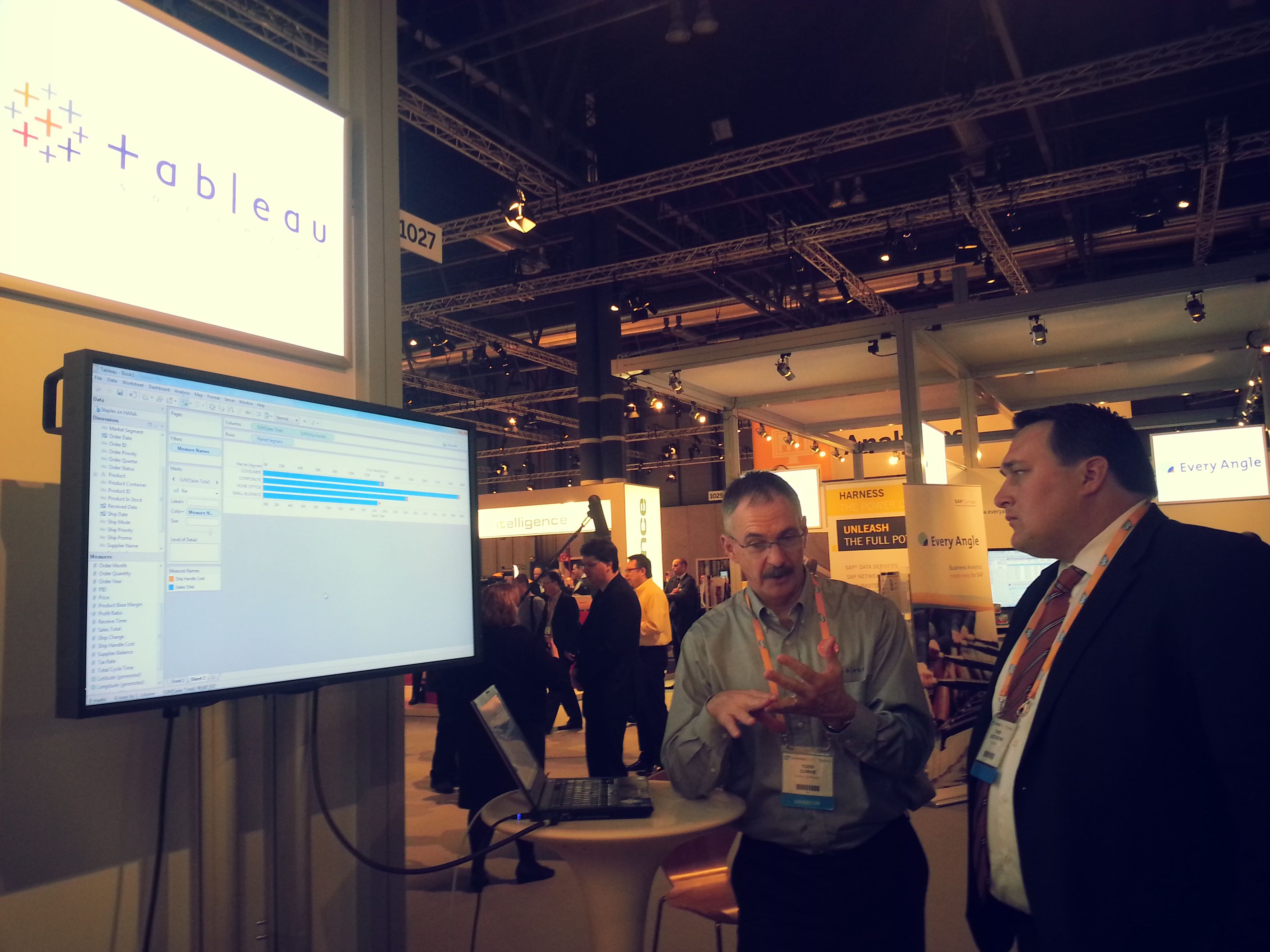Got SAP HANA? Get Tableau! (redux)
I shamelessly stole this catchy headline from Francois' blog post last year when we announced we had started building a connector to SAP BW. A lot as happened since then. If you've been following this blog, you already know that the Tableau development team has gone bonkers this year and added several new database connectors. We want you to be able to see and understand your data, no matter where it lives.
I shamelessly stole this catchy headline from Francois' blog post last year when we announced we had started building a connector to SAP BW. A lot as happened since then. If you've been following this blog, you already know that the Tableau development team has gone bonkers this year and added several new database connectors. We want you to be able to see and understand your data, no matter where it lives.
The latest connector, which we formally unveiled this week at the SAP Sapphire/TechEd event in Madrid (see photo below) is a native connector to SAP HANA - SAP's new in-memory database. The connector is available starting with Tableau 7.0.9. Tableau connects to SAP HANA via ODBC and SQL. One of the benefits of Tableau's direct connection model is that we push as much computation down to HANA as possible to leverage its processing capabilities. You don't have to suck all the data out and bring it local (when you're working with Big Data, you don't want to do that!) From Tableau, users are able to connect to tables and views, as well as the special analytic content models, such as Analytic Views and Calculation Views, in a few mouse clicks.

SAP HANA is an interesting platform to us for several reasons. First, it is in-memory, and therefore provides very fast response times. We love working with fast data sources because it significantly improves the visual analytics workflow and experience. Second and somewhat related, HANA allows you to physically store the data as rows or columns, meaning it is possible to use it for transactional workloads, analytic workloads, or a hybrid of the two. You no longer have to move the data from one platform to another in order to do analytics. You can just keep the data in HANA and change the physical representation. Finally, HANA is optimized for in-memory computing. If the database can assume that data will always be in-memory, it can use more efficient algorithms to retrieve and process the data than a standard disk-based relational database. In addition, all the extra performance optimizations needed in a traditional database (indexes, materialized views, summary tables, etc.) are effectively not needed anymore, simplifying the administrative overhead.
SAP is in the process of porting their applications to work on HANA. They started with a few critical ones, like SAP BW, that will benefit from the performance gains as a result HANA. A couple of our customers who have tried BW running on top of HANA have indicated that BW performance improved significantly. SAP has announced that many more applications in their business suite will support HANA over the next couple of quarters so that customers can realize additional benefits from their HANA investments.
I've also been impressed by how easy SAP has made it to get access to HANA. In addition to making it available as an appliance from the major hardware vendors (which I assume most customers will likely do), they also make it available on Amazon Web Services so that it is easily accessible to developers and other customers who might not have the budget for new hardware. To me, this is proof that SAP is very interested in building an open platform and broad ecosystem of partners and customers.
I encourage all customers who have HANA or are in the process of evaluating it to download the latest Tableau release and begin realizing immediate return-on-investment. Empower your business experts and analysts to easily connect, explore, ask questions of, and analyze your data in order to build the insights needed to improve your business.
As always, we welcome your feedback on our new SAP HANA connector.
Subscribe to our blog
在收件匣中收到最新的 Tableau 消息。



